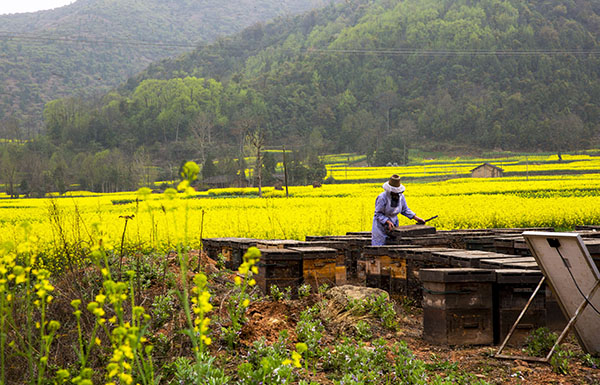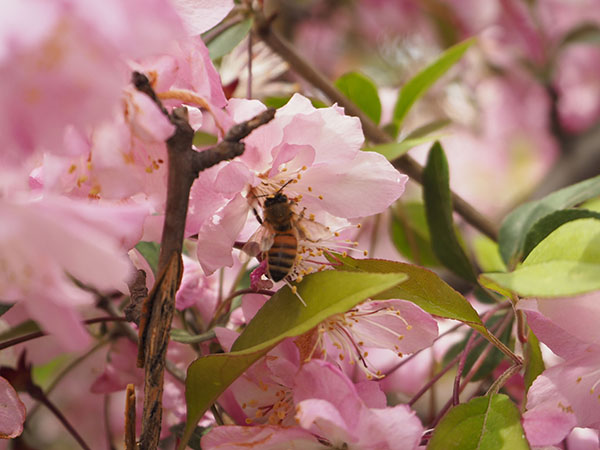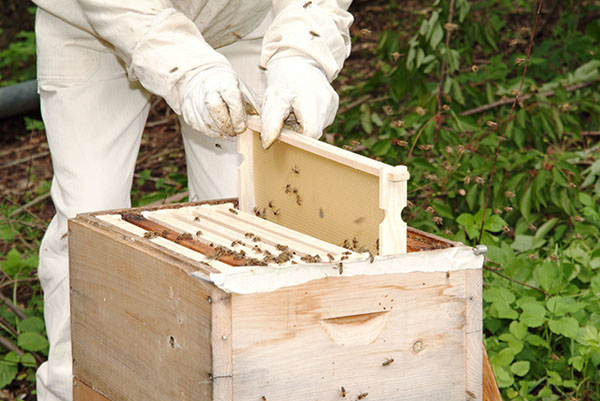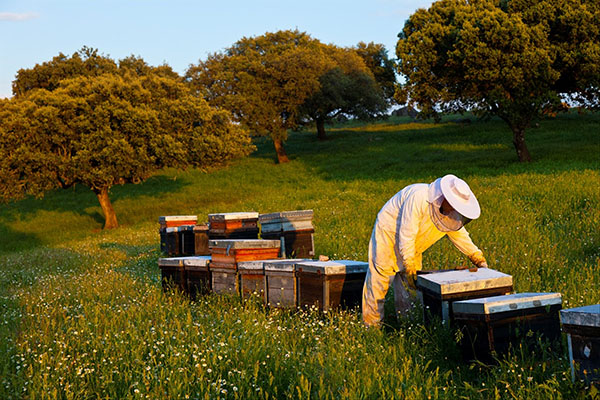Beekeeping technology and basic knowledge
 Oct 26,2022
Oct 26,2022

 Lucia Ma
Lucia Ma
Bees are the collective name of several resource insects in the family Apiaceae. They are well-known and used because they can gather flowers and make nectar. In fact, humans have begun to have bees as early as thousands of years ago. Let’s take a look at beekeeping technology and beekeeping knowledge!
Bee reclassification
1. Chinese bee: Chinese bee, the full name of Chinese bee, is a unique and excellent bee species in China. It is also the bee species with the longest history of breeding in China. The advantage is that it has a strong adaptability to the natural environment in China. Bees are easy to separate bees naturally and abandon their nests to migrate, so they are more suitable for farming in mountainous areas with complex terrain and scattered nectar sources.
2. Italian bee: Italian bee, the full name of Italian bee, is not only an ideal variety for both honey pulp and production, but also an ideal bee species for producing pollen and propolis. Breeding in plains with simple terrain and concentrated nectar sources.

Bee colony structure
1. Queen Bee: A queen bee is a female bee that develops from a fertilized egg. Under normal circumstances, there is only one queen bee in a bee colony. The main function is to lay eggs to reproduce new bees and maintain the order of the bee colony by secreting queen pheromone.
2. Worker bees: Worker bees are female bees developed from fertilized eggs. Under normal circumstances, there are tens of thousands of worker bees in a bee colony, and their main role is to be responsible for almost all work, such as collecting food, building hives, and feeding larvae.
3. Drones: Drones are male bees developed from egg cells. Under normal circumstances, there are hundreds to thousands of drones in a bee colony. The main function is to mate with the new queen bee, and soon after mating, the reproductive organs will fall off and die.
Habits of bees
1. Sociality: Bees are typical social insects. The colony is composed of worker bees, drones and queen bees. The worker bees are responsible for almost all the work inside and outside the colony. The drone is responsible for mating with the new queen, and the queen is mainly responsible for laying eggs to nurture new bees.
2. Separation of bees: Bees use sub-bees to breed populations. Sub-bees mostly occur in spring when the nectar source is abundant and the climate is suitable. When the bees are divided, the old queen bee and some worker bees leave the hive and find a new site to build their nests, while the original hive is reserved for the upcoming A new queen bee who is out of the house or has been out of the house.
3. Metamorphosis: Bees are completely metamorphic developmental insects. Three types of bees have to go through four stages: egg, larva, pupa and adult bee. It takes about 16 days for the queen bee to go from egg to bee, and about 20 days for worker bee to go from egg to bee. Days, while drones take about 23 days from egg to bee.
4. Exclusivity: Bees rely on colony smell to distinguish similarities and differences. Except for drones, two bees with different colony smells will make a big shot. At the same time, there are guard bees guarding the hive at the door of the colony. If other bees are close to the door of the colony, they will be guarded Bees drive or attack.

Beekeeping site
1. Nectar source: Bee farms must be established in places with abundant nectar sources. The reason is that the normal survival of bees and the production of nectar from flowers are inseparable from the source of nectar. Made honey.
2. Environment: The apiary must be established in a quiet place, because the microclimate near the apiary is more conducive to the reproduction of the bee colony. For example, when the temperature is high, the bees will fan the wind or collect water to cool down, so that it will be invisible. Increase the bee colony burden.
3. Climate: The bee farm must be established in a place with a suitable climate. The reason is that the bee colony can develop stably in a quiet place. Otherwise, the bee colony may not be able to collect and brew honey quietly. When the bee colony is seriously disturbed, the bee colony may even Abandon the nest and flee.
4. Pests: The apiary must be established in a place where there are few enemies. The reason is that many enemies in nature will infest and kill bees. For example, wasps will not only kill the worker bees who go out to collect honey, but also concentrate on attacking bees in the season of food scarcity.
Beekeeping tools
1. Beehive: Beehive is the most basic beekeeping tool. Its specifications and sizes are different, but the structure principle is basically the same. Beginners can buy used beehives from beekeepers, or buy new beehives or make them according to the specifications. beehive.
2. Bee hat: Bee hat is a protective tool for beekeepers, mainly to prevent beekeepers from being stung by bees on their head and neck when they manage bee colonies. Ready-made bee caps can be purchased directly.
3. Bee frame: The nest frame is a wooden frame. Its main function is to fix the nest foundation. There are strict requirements on the specifications. Otherwise, the nest frame cannot be exchanged between the beehives, which will be used for bee colony management and beekeeping equipment. cause great trouble.
4. Bee foundation: The bee foundation is the foundation of the honeycomb house. There are mainly two types of wax nest foundations and plastic nest foundations. At present, beekeepers mainly use wax nest foundations for bees to build their nests. There are different types of honeycomb foundations and intentional honeycomb foundations.

Beekeeping technology
1. Feeding: Feeding is a key technology that must be mastered in bee breeding. It can be roughly divided into two types: subsidy feeding and reward feeding. Among them, subsidy feeding is to supplement the food necessary for the survival of the bee colony, while reward feeding is It is to stimulate the queen bee to lay eggs and stimulate the worker bees to nurse the larvae.
2. Dividing bees: Dividing bees is the most important way to expand the population of bees. It can be roughly divided into two types: natural bee separation and artificial bee separation. Among them, small-scale medium bee farming generally allows the bee colony to be naturally divided into bees, while Italian bees are generally divided into bees. Breeding and large-scale bee farming mostly use artificial bee division.
3. Jiewang: Jiewang refers to introducing a new king to the no-king group. In beekeeping production, it is inevitable that the bee colony loses the king accidentally. At this time, it is necessary to re-introduce a new queen bee to the bee colony. In addition, the apiary When introducing other queen bees, the queen bee technology is also used to intervene the queen bee into the colony.
4. Combined group: Combined group refers to the combination of two or more groups into a group. For example, in early spring, two or more weak groups can be artificially combined into a relatively strong production group. The swarm can also be merged into other queen swarms when the value of a swarm alone.
5. Disease prevention: Disease prevention is a skill that beekeepers must master. Once the bee colony breaks out, the beekeeping will directly affect the beekeeping efficiency. In severe cases, the bee colony may die or even affect the entire bee population. In fact, many people fail to keep beekeeping. It is caused by inadequate disease control.
Bee colony management
1. Spring: Spring breeding is the focus of bee management in spring. Only when spring breeding is done can the beekeeping benefits throughout the year be ensured. The specific method is to first determine the appropriate breeding time according to the local climate, and then insist on rewarding bee colonies. in order to promote the rapid reproduction of the bee colony.
2. Summer: Heatstroke prevention is the focus of bee management in summer. First of all, the beekeeper should take out the honey spleen and waste comb spleen from the beehive to facilitate ventilation, and then build a awning on the beehive to provide shade and sun protection. Sprinkle cold water or ice cubes to cool the hive.
3. Autumn: Autumn breeding is the focus of bee management in autumn, and the quality of autumn breeding is also a determining factor for whether the bee colony can survive the winter smoothly. It is the basic condition for the bee colony to survive the winter smoothly.
4. Winter: Overwintering is the focus of winter management of bees. Its colony must be able to support the next spring. The second bee colony must have enough overwintering feed. The third beehive must be kept warm rather than cold. Overwintering of any of these may fail.

Beekeeping Precautions
1. Bee breeding should be raised into strong colonies as much as possible. The reason is that strong colonies are much higher than weak colonies in terms of disease resistance and collection power, and the effective way to raise strong colonies is to complement the weak or combine bee colonies.
2. Bee breeding should try to avoid the occurrence of bee fever, because the production efficiency will be greatly reduced when the bee colony occurs, especially the impact of bee fever on honey production is very obvious during the honey-flowing period.
3. The old, weak, sick and disabled queens should be replaced in time in bee breeding. The reason is that when the queen bee capacity is insufficient, the impact on the bee colony will be particularly obvious. Therefore, beekeepers should cultivate new queens in time and replace the old, weak, sick and disabled queens in time.
4. Bee breeding should strengthen the prevention and control of pests and diseases, because the outbreak of pests and diseases is almost devastating to the bee colony. Do not pay attention to prevention and wait until the outbreak of pests and diseases before remediation.




 Tel:
Tel:

 Home
Home What beekeeping tools do you need to beekeeping bees?
What beekeeping tools do you need to beekeeping bees?  You May Also Like
You May Also Like







 Tel
Tel
 Email
Email
 Address
Address







